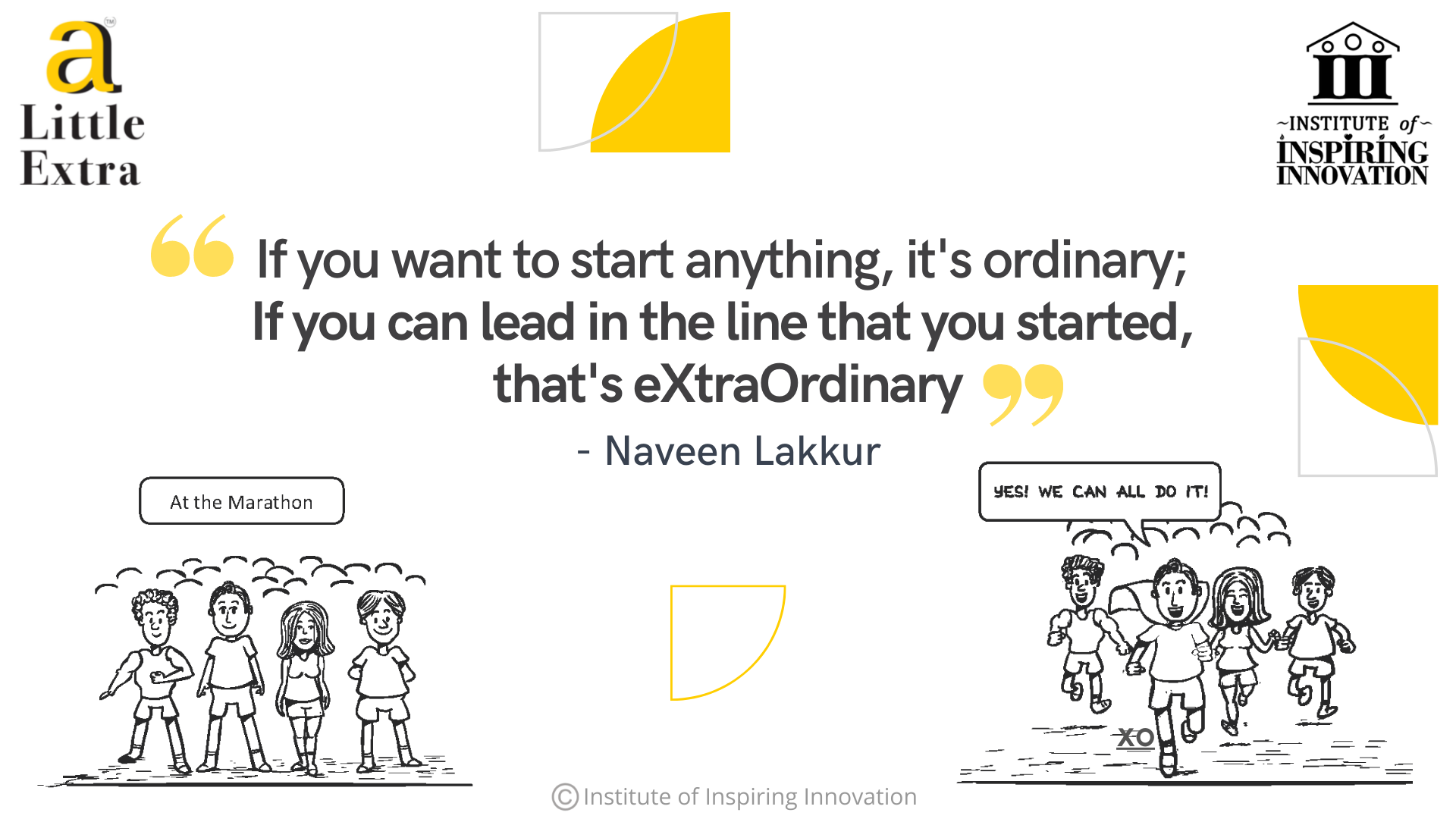If you can lead in the line that you started, that’s eXtraOrdinary

“If you want to start anything, it’s ordinary; If you can lead in the line that you started, that’s eXtraOrdinary.” – Naveen Lakkur
It is appreciable that self-starters begin a new project or a new venture on their own. Only a few people take the lead and make people follow their lead in any project or venture they start. If you have seen migratory birds, you will see they fly in the shape of a ‘V.’ The bird at the lead takes the most friction and the most resistance. Yet they reach their destination. Starters who lead from the front too take the most resistance and friction. We have a few examples who started something good and lead people through.

Leave a comment